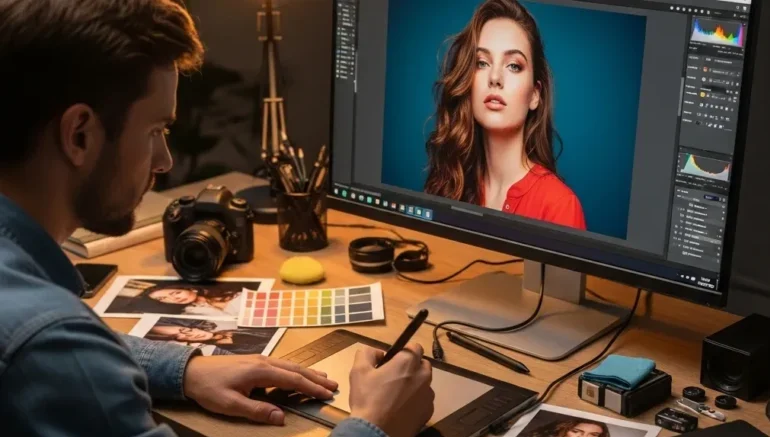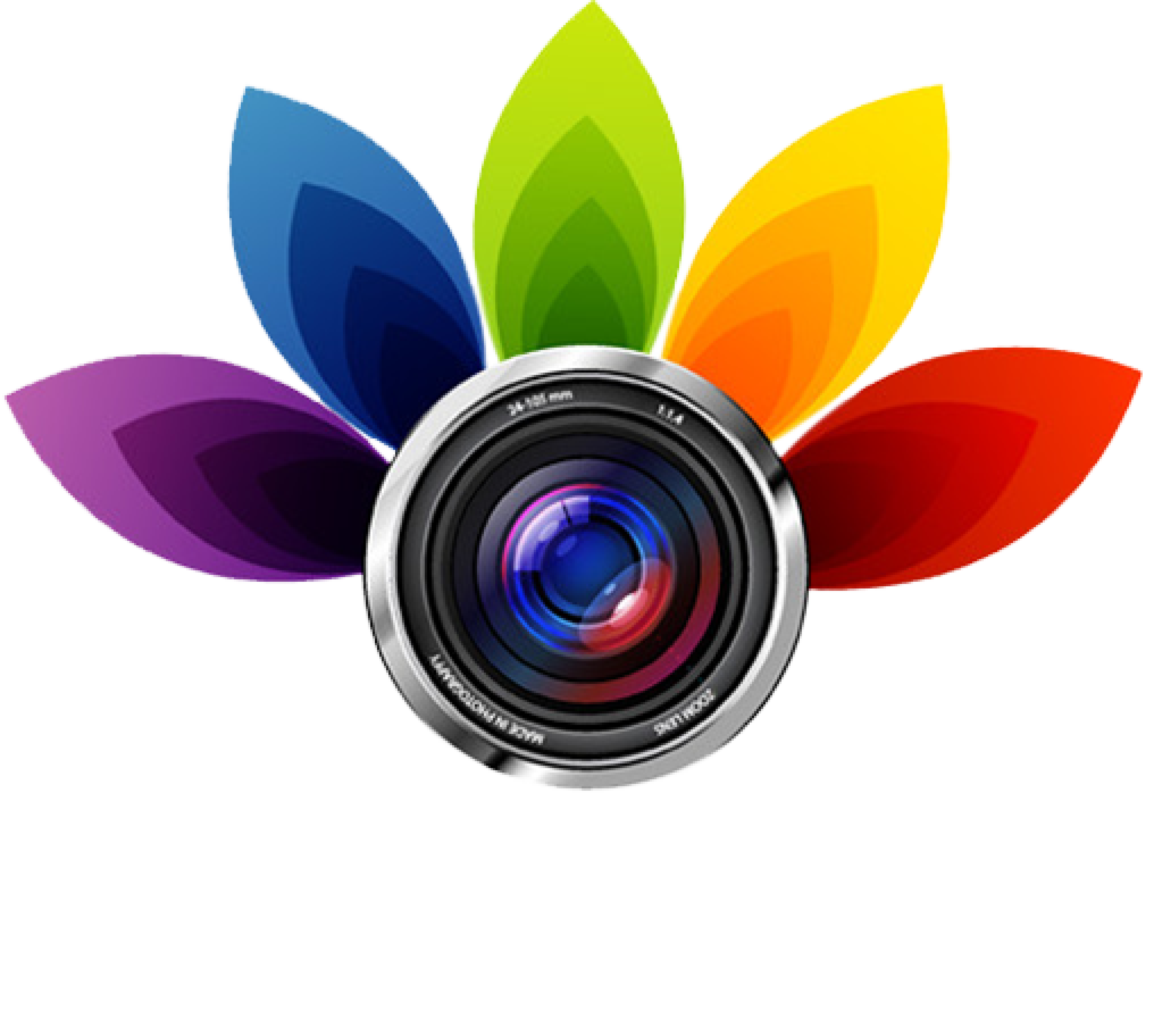
Top 10 Reasons Manual Editing Still Matters in Photography
Manual editing has been the backbone of photography for decades, and even with AI tools growing smarter, it still holds a special place in the industry. Unlike automated software, manual editing gives photographers full control over every detail, from color tones to lighting and texture. It allows for creative decisions that a computer might miss, making sure each image matches the photographer’s vision. If it’s refining a portrait, improving a product shot, or adjusting complex lighting, manual editing adds a level of precision and artistry that AI alone can’t achieve. For professionals and enthusiasts alike, this hands-on approach remains a valuable skill.
Despite the rise of AI, many photographers, brands, and studios continue to rely on manual editing for high-quality results. It’s not just about fixing mistakes, manual editing can improve storytelling, highlight emotions, and make visuals stand out. Clients often notice the soft differences that a human touch brings, from natural skin tones to perfectly balanced shadows. This ongoing demand proves that technology cannot fully replace human skill. In the sections ahead, we’ll explore the top 10 reasons why manual editing will always have a place in photography.
Manual Editing Brings Personal Control
 One of the biggest advantages of manual editing is the complete control it gives photographers over every part of their image. Unlike automated tools, which apply general adjustments, manual editing allows you to fine-tune colors, shadows, and highlights exactly how you want. This level of control makes sure that every photo matches your creative vision and meets client expectations. Even small details, like adjusting a reflection or softening a background, can make a big difference in the final result.
One of the biggest advantages of manual editing is the complete control it gives photographers over every part of their image. Unlike automated tools, which apply general adjustments, manual editing allows you to fine-tune colors, shadows, and highlights exactly how you want. This level of control makes sure that every photo matches your creative vision and meets client expectations. Even small details, like adjusting a reflection or softening a background, can make a big difference in the final result.
Manual editing also allows you to experiment and make creative decisions that AI might not consider. You can highlight certain elements, remove distractions, or adjust the mood of a photo to tell a story. For professionals, this control is important for producing high-quality, polished images that stand out.
Tips for maintaining personal control while editing:
- Work on individual layers so you can adjust each element separately.
- Use selective adjustments to highlight important parts of the image.
- Take your time with fine details rather than relying on automatic fixes.
- Keep a reference image or style guide to make consistent results.
True-to-Life Colors
 Achieving true-to-life colors is one of the most important reasons photographers rely on manual editing. Automated tools often make colors look either too flat or overly saturated, which can take away from the natural feel of the photo. With manual editing, you can carefully adjust tones, contrast, and brightness to make every color matches what was seen in real life. This is especially important for product, fashion, and food photography, where accurate colors can affect how viewers perceive the image.
Achieving true-to-life colors is one of the most important reasons photographers rely on manual editing. Automated tools often make colors look either too flat or overly saturated, which can take away from the natural feel of the photo. With manual editing, you can carefully adjust tones, contrast, and brightness to make every color matches what was seen in real life. This is especially important for product, fashion, and food photography, where accurate colors can affect how viewers perceive the image.
Manual color adjustments also allow photographers to maintain consistency across a set of images. For example, in a product catalog or a wedding album, you want each photo to have the same color balance and mood. By working manually, you can match skin tones, fabrics, and backgrounds precisely, keeping the final images cohesive.
Tips for achieving true-to-life colors:
- Use reference photos or color charts to guide your adjustments.
- Work in a calibrated monitor to see accurate colors.
- Adjust colors in small increments rather than large changes.
- Check images on different devices to assure consistency.
Preserving Fine Details
 One of the key benefits of manual editing is the ability to preserve fine details in every image. Automated tools can sometimes smooth out textures or remove soft elements that are important for a realistic and professional look. Manual editing allows you to carefully improve textures, patterns, and small details without losing their natural appearance. This is especially important in fashion, product, and architectural photography, where every detail contributes to the overall quality of the photo.
One of the key benefits of manual editing is the ability to preserve fine details in every image. Automated tools can sometimes smooth out textures or remove soft elements that are important for a realistic and professional look. Manual editing allows you to carefully improve textures, patterns, and small details without losing their natural appearance. This is especially important in fashion, product, and architectural photography, where every detail contributes to the overall quality of the photo.
Working by hand also gives you the chance to emphasize the details that matter most. You can sharpen certain areas, soften others, and make sure that the image draws attention to its intended focal points. By taking control of these simple adjustments, your photos maintain depth and realism that automated processes often miss.
Tips for preserving fine details:
- Zoom in and work on small sections at a time for precision.
- Use selective sharpening instead of global adjustments.
- Adjust textures and contrast carefully to maintain natural look.
- Avoid over-smoothing, especially on fabrics, surfaces, or skin.
Manual Editing Maintains Natural Skin Tones
 Maintaining natural skin tones is one of the most important reasons photographers still rely on manual editing. Automated tools often overcorrect or flatten skin, making it look artificial or unnatural. Manual editing allows you to carefully adjust color, brightness, and contrast so skin looks healthy and realistic. This is important for portraits, weddings, beauty photography, and professional headshots, where details makes a big difference in the final result. Working manually also gives you control over variations in lighting and individual skin tones.
Maintaining natural skin tones is one of the most important reasons photographers still rely on manual editing. Automated tools often overcorrect or flatten skin, making it look artificial or unnatural. Manual editing allows you to carefully adjust color, brightness, and contrast so skin looks healthy and realistic. This is important for portraits, weddings, beauty photography, and professional headshots, where details makes a big difference in the final result. Working manually also gives you control over variations in lighting and individual skin tones.
You can balance highlights and shadows, preserve texture, and make sure that every subject looks their best while still looking real. By taking the time to refine these details, you create images that feel authentic and professional.
Tips for maintaining natural skin tones:
- Use selective adjustments instead of applying global filters.
- Work with layers to make precise changes without affecting other areas.
- Compare edits to the original image to keep tones realistic.
- Adjust lighting and color balance carefully to match the scene.
Handling Complex Compositions
 Manual editing is especially valuable when dealing with complex compositions that automated tools often struggle with. Multi-layered images, reflections, intricate backgrounds, or creative effects require careful adjustments to make everything look natural and balanced. By editing manually, you can isolate specific elements, correct overlaps, and make sure that each part of the image fits together seamlessly. This level of control important is for advertising, fashion, and creative photography projects where precision matters.
Manual editing is especially valuable when dealing with complex compositions that automated tools often struggle with. Multi-layered images, reflections, intricate backgrounds, or creative effects require careful adjustments to make everything look natural and balanced. By editing manually, you can isolate specific elements, correct overlaps, and make sure that each part of the image fits together seamlessly. This level of control important is for advertising, fashion, and creative photography projects where precision matters.
Manual editing also allows you to solve unique problems that AI might overlook. You can fix distractions, adjust perspective, or blend multiple exposures to create a cohesive final image. Taking the time to refine these details make sure that your photos maintain a professional and polished look.
Tips for handling complex compositions:
- Work with layers to separate and control each element.
- Use masking to adjust individual objects without affecting the whole image.
- Check the alignment and perspective to maintain balance.
- Take your time blending textures, shadows, and highlights for a natural result.
Manual Editing Strengthens Creative Vision
 Manual editing allows photographers to bring their unique ideas and style into every image. By adjusting colors, lighting, and composition by hand, you can highlight emotions, set a mood, and tell a story that automated tools may overlook. It gives you full control to experiment and create visually striking photos that reflect your artistic vision.
Manual editing allows photographers to bring their unique ideas and style into every image. By adjusting colors, lighting, and composition by hand, you can highlight emotions, set a mood, and tell a story that automated tools may overlook. It gives you full control to experiment and create visually striking photos that reflect your artistic vision.
Tips:
- Try different color tones and contrast settings to create a specific mood.
- Use layers to experiment without affecting the original image.
- Focus on improving the story or emotion in each shot.
Flexible Problem Solving
Manual editing gives you the ability to fix unexpected issues in photos, such as unusual lighting, background distractions, or uneven exposure. Unlike automated tools, you can make precise adjustments to solve these problems without compromising other parts of the image. This flexibility assures high-quality results in any situation.
Tips to try:
- Use selective edits to fix problem areas individually.
- Adjust shadows, highlights, and perspective carefully.
- Always review the whole image after making corrections.
Manual Editing Builds Client Trust
 Clients notice the difference when photos are carefully edited by hand. Manual editing shows attention to detail, professionalism, and dedication, which helps build confidence in your work. Unlike automated edits, which can feel generic or inconsistent, hand-edited images reflect a personal touch that clients value. This trust is important for photographers working with weddings, portraits, or high-end products, where quality and reliability matter most. By consistently delivering polished results, you demonstrate that you understand your clients’ needs and care about the final outcome.
Clients notice the difference when photos are carefully edited by hand. Manual editing shows attention to detail, professionalism, and dedication, which helps build confidence in your work. Unlike automated edits, which can feel generic or inconsistent, hand-edited images reflect a personal touch that clients value. This trust is important for photographers working with weddings, portraits, or high-end products, where quality and reliability matter most. By consistently delivering polished results, you demonstrate that you understand your clients’ needs and care about the final outcome.
Hand editing also allows you to make adjustments based on client feedback, making their vision is realized.
Tips for building client trust through manual editing:
- Share progress previews so clients can see your careful adjustments.
- Keep a consistent style across all images for brand recognition.
- Take time to review images for small errors before submission.
- Listen to client feedback and adjust details accordingly.
Creating Timeless Quality
 Photos edited by hand often stand the test of time because they maintain natural colors, textures, and detail. Automated tools may produce quick results, but they can introduce artifacts or over-smooth images, which may look outdated in a few years. Manual editing makes sure that images remain professional and visually appealing, no matter how trends in filters or AI change. Timeless quality is especially important for portfolios, advertising, and personal keepsakes like wedding albums. Hand-edited photos maintain a classic look that feels both polished and enduring.
Photos edited by hand often stand the test of time because they maintain natural colors, textures, and detail. Automated tools may produce quick results, but they can introduce artifacts or over-smooth images, which may look outdated in a few years. Manual editing makes sure that images remain professional and visually appealing, no matter how trends in filters or AI change. Timeless quality is especially important for portfolios, advertising, and personal keepsakes like wedding albums. Hand-edited photos maintain a classic look that feels both polished and enduring.
Tips for creating timeless quality:
- Focus on natural colors and textures rather than heavy effects.
- Avoid trendy filters that may look outdated quickly.
- Keep a clean and balanced composition.
- Review images after a few days to assure consistency and quality.
Manual Editing Complements AI Tools
 Manual editing and AI tools can work together to produce the best results. AI can handle repetitive tasks like bulk color correction or background removal, saving time for the more creative manual work. By combining both approaches, you get efficiency without sacrificing precision, detail, or artistic vision. This hybrid workflow is useful for large projects like e-commerce catalogs, event photos, or advertising campaigns. You can use AI for basic adjustments and focus your manual editing skills on refining key elements that matter most to clients.
Manual editing and AI tools can work together to produce the best results. AI can handle repetitive tasks like bulk color correction or background removal, saving time for the more creative manual work. By combining both approaches, you get efficiency without sacrificing precision, detail, or artistic vision. This hybrid workflow is useful for large projects like e-commerce catalogs, event photos, or advertising campaigns. You can use AI for basic adjustments and focus your manual editing skills on refining key elements that matter most to clients.
Tips for combining manual editing with AI:
- Use AI to handle batch edits, then fine-tune key images manually.
- Focus manual edits on details AI might miss, like textures or shadows.
- Review AI outputs carefully to correct any errors.
- Experiment with AI-assisted tools to find the best balance for your workflow.
Conclusion
Manual editing continues to hold a special place in photography because it gives photographers control, creativity, and precision that AI alone cannot match. From maintaining natural colors and fine details to solving complex problems and building client trust, hand-edited photos consistently stand out. Even as AI tools become faster and more powerful, the human touch adds personality and quality that machines cannot fully replicate. Have you noticed the difference between AI-edited and manually edited photos in your own work or projects? Share your experiences in the comments below and let us know which approach you prefer and why. Your insights could help others understand why manual editing still matters today.
Read Next: How Photo Editing Services Supported an Apparel Brand’s Success





